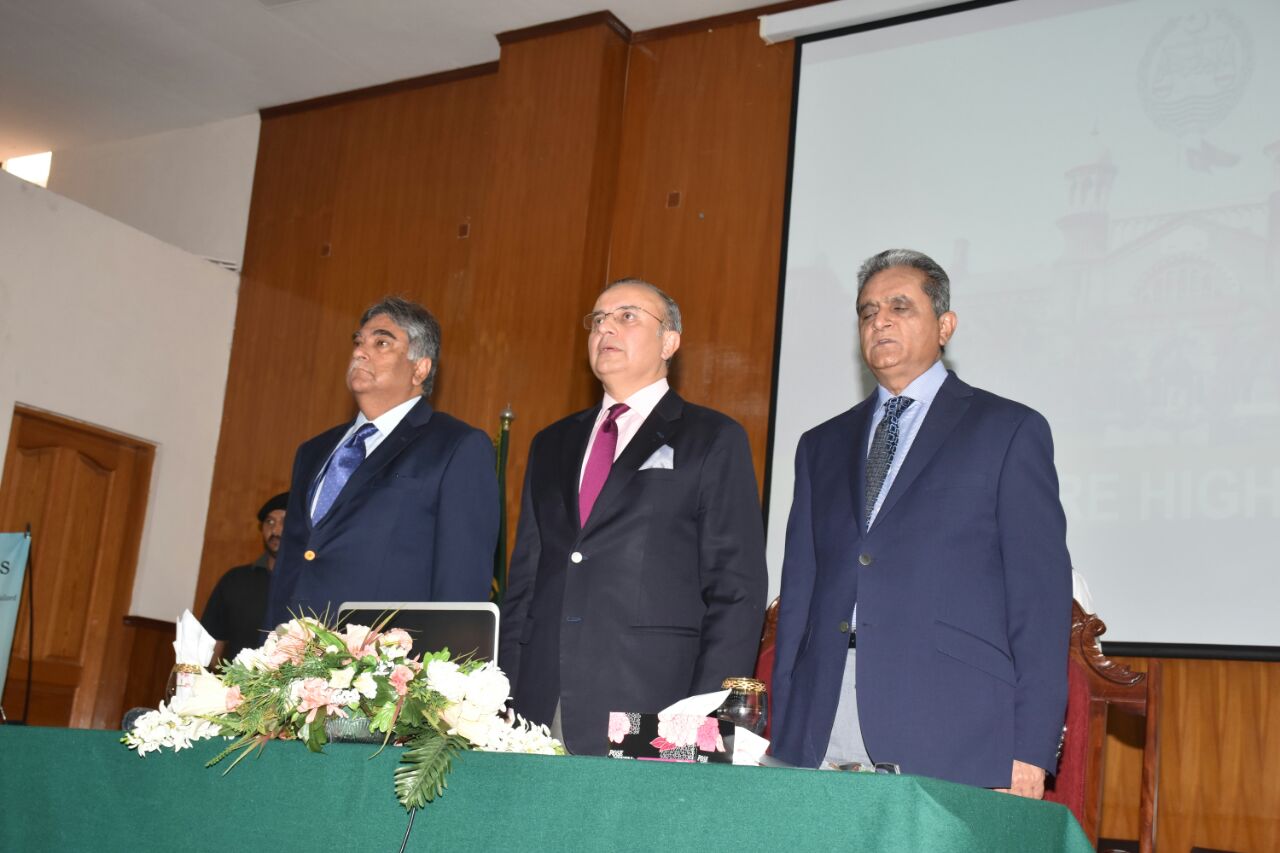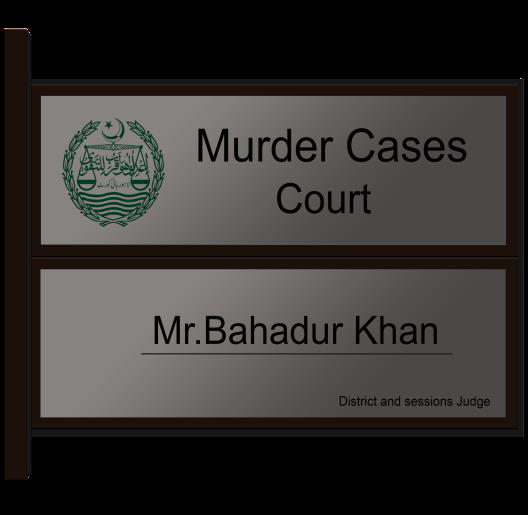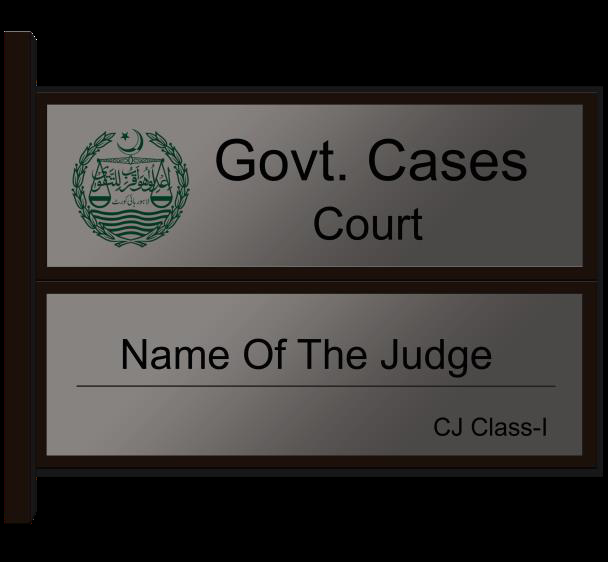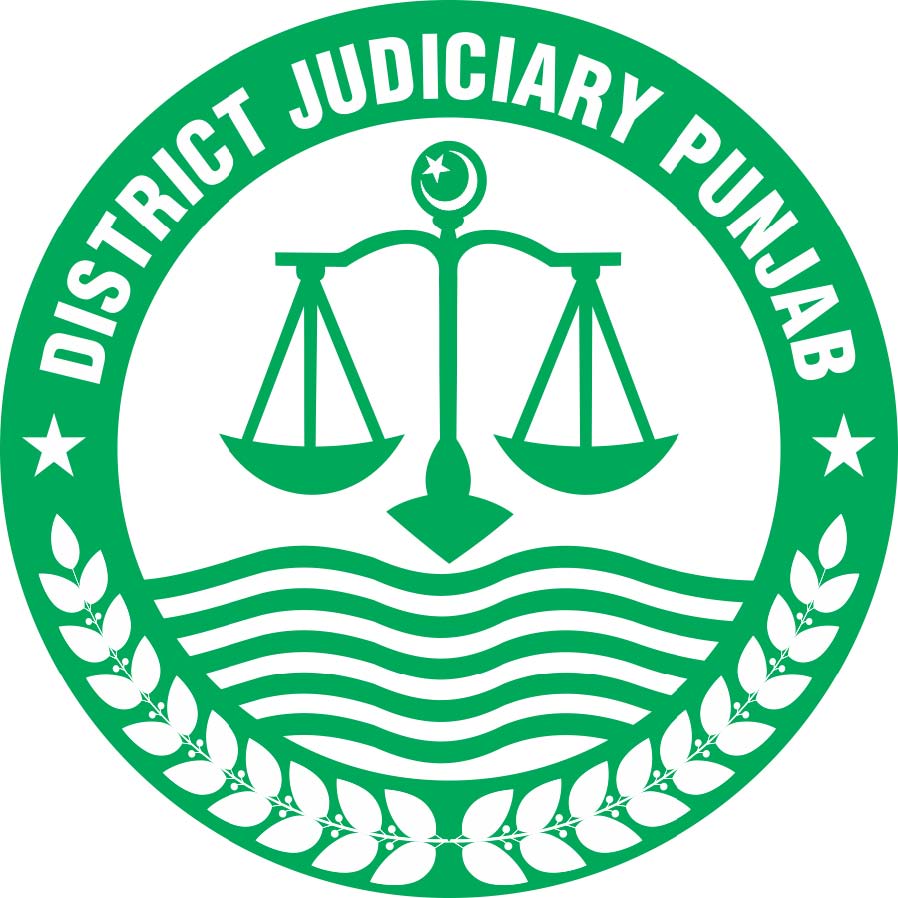Case & Court Management – District Judiciary Punjab
The judiciary in Pakistan is grappling with the issue of the increase in pending cases in courts. The increasing workload and the number of pending cases cannot be managed without a clear scheme of Case and Court Management. The incumbent Chief Justice of the Lahore High Court is making efforts to address this challenge so that the people can have unflinching trust not only in the higher judiciary but also in the district judiciary. In this respect, the honourable Chief Justice Syed Mansoor Ali Shah has a clear message:
“Our objective is to reduce the shelf life of every case that is filed before us in order to provide swift justice to a common man. In order to build a robust and an efficient justice and grievance redressal system we are continuously adjusting, reforming and changing ourselves. Case and Court Management Plan for the District Judiciary will redefine the working of the district judiciary and take the justice system to the next level. All our efforts are for the common man who has reposed trust in us.”
Case & Court Management Plan for the District Judiciary:
The Case & Court Management Plan for the District Judiciary was required because of the heavy pendency of both civil and criminal cases at the district court level. The plan focuses on rationalisation of the workload according to available human resources, categorisation of cases, docket management, and the constitution of specialised courts.
In this respect, the focus has been on three areas:
1. Categorisation of cases;
2. Case Management Plan; and
3. Identification of Year Wise Case Load.
Categorisation of Cases
A new categorization of cases has been finalised after analysing the data collected through audits. In this respect, categorisation is done in both the civil and criminal cases.
Case & Court Management
The Case Management Plan for civil and magisterial courts has been formulated to rationalise the existing strength of officers, pending case load and time required to adjudicate. Specialised courts have been constituted keeping in view multifarious factors. The newly established courts are as follows:
Civil Courts
1. SCJ (Judicial): Special Court (Multiple Category Cases)
This court will deal with the following matters:
i) Land Acquisition
ii) Environmental Cases
iii) Waqf/Trust
iv) Insolvency
v) Foreigners
vi)Board/College/University
vii) TMA/Union Council.
2. CJ Class I
The Civil Judge Class 1 will be further bifurcated into the following courts:
i) Government Cases Court
ii) TMA/UC Cases Court
iii) Canal Cases Court.
3. CJ Class I/II/III
These courts will be segregated on the basis of the following matters:
i) Regular Civil Cases Court: dealing with the cases involving contractual Rights, Declaration, Cancellation, Injunction and other Civil matters.
ii) NADRA Cases Court
iii) WAPDA Cases Court
iv) Rent Tribunal
v) Guardian/Family Court.
Criminal Courts
The criminal cases will be managed by the below-mentioned courts which are again specialised for better management and early disposal. They are divided as follows:
1. District & Sessions Judge/Addl District & Sessions Judge
The following courts are created under this category:
i) Murder Cases Court
ii) Illegal Dispossession Cases Court
iii) CNSA Court
iv) ETO Court
v) Criminal Trial Court (Multiple Category): Abduction, Rape, Blasphemy & Defamation
vi) Sui Gas Utility Court
vii) Civil Trial Court (Multiple Category): Defamation, Mental Health Ordinance, Suits under Order 37 CPC, Waqf/Others.
2. Magisterial Courts
Section 30 Cases, Class I Cases and Minor Offences will be dealt with by these courts.
Other Reforms
Under the new policy, many other decisions have also been made with reference to case management and court management. They are as follows:
Case Registration Number:
A new methodology of assigning case numbers is made in the whole province and such numbers will be used throughout the pendency of the case from filing to the final disposal. The number will be allotted as per the scheme of Province-District-Category-Number-Year (headquarter). These registration numbers will, however, start from January 2018.
Case Information Sheet
A separate cover page will be affixed by the office/branch at the time of institution of the suit and this cover page will contain the particulars of the case.
Yellow Colour Order Sheet
To distinguish the order sheet from other documents, the order sheets will now be in yellow colour.
Disposal of Old Cases
Under the new Court Management Plan, courts have been instructed to prioritise the disposal of old cases mentioned in their respective Court Management Plan.
Court Room Number
All the District and Session Judges and the Senior Civil Judges (Administration) in Punjab will now have specific numbers of the court rooms displayed at the doors of the court rooms as well.
Standardized Nameplate of Courts
All the courts in Punjab will have standardized nameplates mentioning the name of the court and the name of the judge.
Wearing of Gowns
All the judges of the District Judiciary will now start wearing black gowns as part of their dress codes.
Other Changes
Many other changes have also been made like the uniform of the staff of courts, ID cards for retired judges, emblems of District Judiciary and Directorate of District Judiciary, Gender Diversity Policy, a new Transfer Policy, etc.
In order to enhance the performance and prestige of the judiciary, an overhaul of the district judiciary was required since long. Given that the number of cases pending in the courts has been increasing in recent years, there was a need to streamline the processes and procedures of the courts so that the limited number of judges could be utilised to perform in a more efficient manner to perform their judicial duties. Where on one hand, the specialised courts will be better equipped to understand and dispose of the specific type of cases, the overall changes in the outlook of the judiciary will give it a more professional look which has a direct relation with the image of the courts in the eyes of the litigants. It is now upon the individual judges and the members of the bar to work professionally in this set up so that our legal and judicial environment is known for its competence and true dispensation of justice.








